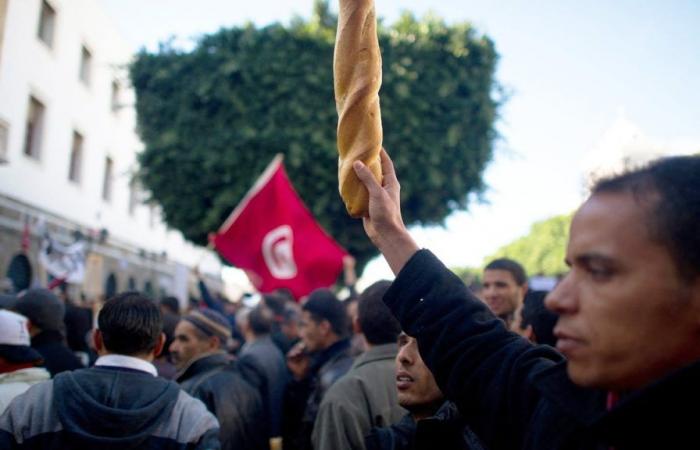Bread is an old story, a bit like the world! For prehistorians, it dates back to the Neolithic and plays a major role in the sedentarization of theHomo sapiens. Because bread necessarily means mastery of agriculture, whether it involves growing wheat, barley, millet, spelled…
In Antiquity, the Latin phrase “ panem et circenses » (“bread and circuses”) is enough to depict the importance of bread in the Imperium Romanum, the leading military power in the world at the time. “Cereals, especially wheat and barley, are old Mediterranean crops. Production is based on three large regions, the traditional “granaries” of Antiquity. Egypt first […]Syria […]North Africa, Ifriqiya in the lead, particularly through the Medjerda plain regions […]. We find Also wheat and barley in the central and western Maghreb, in the regions of Constantine and Sétif, on the Atlantic coast and in the high plains of Morocco”, recalls the historian Maurice Lombard in his work Islam in its first greatness.
the rest after this ad
Since the Middle Ages, whether in Paris, Baghdad or Fez, the authorities have understood: increasing the price of bread is opening the door to uprising and insecurity in the cities and countryside. And even today, from Egypt to Morocco, the situation is almost identical. Didn’t the demonstrators of the “Arab Spring” chant in unison and clearly “Bread, freedom, dignity”?
When Egypt is hungry…
A country particularly emblematic of this situation, Egypt and its “baladi bread”. It must be said that it is on the banks of the Nile that the bread sourdough was born, around -4000 or -5000 BCE. Since then, Egyptians have been happily consuming it, reaching more than double the world average. Problem: the country of the pyramids is no longer the “granary” that it was in Antiquity. Cairo must import wheat – 10 million tonnes per year – and is therefore suspended from world market prices.
the rest after this ad
In this context, the outbreak of war between Ukraine and Russia in 2022 was very bad news for the country. Before this, subsidies on bread represented 3 billion euros annually. And if the surge in grain prices has weighed on the state budget, it remains reluctant to reduce the amount of subsidies. The authorities remember the effects of the rise in the price of bread in 2011, day before of the “Arab Spring”, but also that which occurred in 1977 under Anwar el-Sadat. The country then experienced several days of riots, the army fired on the crowd and a curfew had to be established for the first time since 1952, all with a very heavy toll: 43 dead and more than 600 wounded. Sadat finally reversed course by lowering the price of bread.
To read : Inflation and purchasing power: while waiting for the days without bread…
Libya saw the price of raw materials soar in 2021. Two main reasons for this. With the war, foreign currencies are not coming in, so the government can no longer subsidize bread like under Gaddafi, when we bought ten loaves of bread for one dinar. In 2022, Tobruk, the country’s second city, is set ablaze. Parliament goes up in smoke And young demonstrators chant the slogan “Bread and electricity”. Once again, those in power fear the worst: uncontrolled and uncontrollable riots are spreading like wildfire to the four corners of the country. And once again, he is reversing the price of the population’s staple food.
the rest after this ad
Tunisia has also experienced this type of crisis, since the presidency of Habib Bourguiba. At the very end of 1983, the economic lights were red. The country then turns to the IMF and the World Bank who, as usual, demand an austerity policy. So the reduction in subsidies. Overnight, the price of bread – and incidentally pasta – increases by 70%. The pill does not pass not: parts of the south of the country, the riots will spread to the north and to Tunis. Curfew and state of emergency are declared. Ten days of riots followed, the results of which were bloody. 70 dead, 400 injured and a thousand arrests. On January 6, 1984, Bourguiba announced in a solemn speech on state television that aid would be restored.
In Tunisia, two categories of bakeries
40 years and an “Arab Spring” later, in 2023, Tunisia led by President Kaïs Saïed once again faces economic difficulties. In addition to the shortage of bread, there is a shortage of coffee, oil… In short, most basic necessities. But the authorities have learned their lesson: despite pressure from the IMF which conditions its aid on a reduction in subsidies, it does not want to hear anything. Instead that to let prices soar, the government opts for another policy by standardizing the country’s baking landscape. In practice, it is a question of distinguishing two categories of bakeries: those which are subsidized, called “classified”, and the “unclassified”. Believing that the latter are not playing the game, the authorities will end up depriving them of subsidies, causing an outcry and queues piling up. Faced with the revolt, Tunis will finally take a step back.
the rest after this ad
Further west, in Morocco, it is the bread riots of 1981, in Casablanca, which remain rooted in collective memory. They even constitute the backdrop of Kadija Leclere’s film, The Bag of Flourreleased in 2012, and that of the very recent The Mother of All THE liesby director Asmae El Moudir, released in 2024. In its History of Morocco since independence, the historian Pierre Vermeren returns to the underlying reasons for the bread revolts in the Cherifian kingdom. “In accordance with the liberal strategy […] of the IMF, the economic is considered a priority over the social. This results in imposed budgetary austerity: freezing of civil servants’ salaries for more than ten years and reduction in subsidies. In a context of drought, such measures have explosive social consequences. Three years after Casablanca, new cities in the kingdom were affected on January 19, 1984 by violent bread riots. In Tetouan and Nador, in the Rif, there were around a hundred deaths. »
To read : Riots in Algiers against soaring prices
The formula used at the time by Driss Basri, the indestructible Minister of the Interior of Hassan II, who speak of the “martyrs of the wand”, remained in the memories. Faced with the revolt, the government, which does not want to lose face, takes a half-step, proposing to halve the increase in the price of bread. End of refusal from the unions. Everything then has to be replayed. A month after the first demonstrations, in Casablanca, on June 20, there was an insurrection. Moroccan writer Zakya Daoud testifies: “The tanks are besieging the streets and the next day we will tour a devastated city, banks, cars, buses burned, storefronts gutted, roads destroyed. » Forty years later, these bread riots still weigh heavily on Moroccan conscience.
Mauritania also experienced its bread riots. It was in 2007, and the prices of many basic necessities such as pasta, rice, oil And the flour was flaming. But as always, it is the price of bread, the most symbolic, which strikes minds and stomachs. At the time, it was the rising VAT which caused prices to rise by 10% to 20%. Across the country, anger is turning into protests. The State tries to argue, explaining that other direct taxes have, at the same time, been eliminated. Faced with the opposition parties who seized on popular discontent and called for a general strike, the authorities – claiming a plot controlled from outside – established a curfew. Gendarmerie and national guard take over the streets of the capital. Opposition leaders are arrested.
Same causes, same consequences. From one era to another, from one country to another, the price of bread definitely remains a symbol that the authorities only touch at their own risk. And perils.
The Morning.
Every morning, receive the 10 key information on African news.







